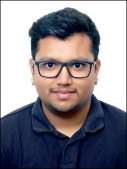Scientific Program
Keynote Session:
Title: 5 D Printing of nano-laden fibre aerogel
Biography:
Ph.D. Ruben Foresti Postdoctoral Researcher in applied medical technical sciences at University of Parma. Research field addressed in 3D, 4D and 5D processes for digital fabrication of biomedical devices and customized scaffolds. PhD in Industrial Engineering at University of Parma. Design and implementation of additive manufacturing systems for biomedical and food applications, including software and 3D model design. Expertise in rapid prototyping of automated systems with remote control including the design and the software development, electrical parts and mobile application. MSc. in Engineering Management and BSc. in Electronics Engineering. Co-founders of M3datek, academic spinoff.
Abstract:
The organs functionality and the related material mimicry properties (Kokkinis) are difficult to reproduce. The smart design and reconstruction processes (Avventuroso; Wu) requires the material functionalization and engineering. To overcame these problems, we merged the composite biomaterials (Guarino; Milazzo) properties with the bio-composite manufacturing processes (Foresti). In fact, the composite biomaterial can modulate its properties with nanoparticles and the resulted bio-ink can be used for the fabrication of the fibre, the adhesive interface and the coating matrix of a bio-composite material. For example, with a flexible fibre covered with an adhesive coating (impermeable and unable to improve the cells adherence, avoiding occlusion problems) it is possible to develop a functional vessel (Hajal).We reconstructed a femoral peripheral artery bifurcation utilising a patient morphology CT, obtaining a full customisable 5D printed object (Gillaspie). The resulted digital model was used to realise, with a custom made RFP bioprinter (Ozbolat), a sodium alginate- based (enriched with green fluorescent NPs) coating balloon gelled with EtOH, dehydrated (nano-laden fibre aerogel) and tested in-vitro. Furthermore, in-vivo tests (Fig. 1) with the bio-composite device demonstrated the uniform gradual release and a very short dissolution time (~ 2/3 minutes).Thus, digitalising the object we can realise 5D printed devices with hard and/or soft material (engineering parameters, functional activity and biological interaction). Moreover, using different bio-composite material, merged with the patient morphology, it is possible to implement a synthetic organ for preliminary tests and training.
Title: Additive manufacturing applied in parallel architecture machine
Biography:
Sebastian Matamoros will completed his degree at the age of 25 years from National University of Colombia. He is a researcher at Experimental Factory Laboratory (LabFabEx by its acronym in spanish) focus at additive manufacturing and desing with photopolymer and ceramic materials. He has published 2 papers in meetings in Colombia and a scientific magazines.
Abstract:
The following research are focused in take an old router machine and adapt it for ceramic materials additive manufacturing. The lining of it is improve the small or medium industry that by any reason can’t get new high-end capabilities machinery but has old machinery that can be improved or repowered adding some other manufacturing technologies.Following this idea, the laboratory has a parallel CNC router built in 2006 with an unsupported hardware (too old) and software with limited capabilities, the followed document show how is made the 3d ceramic printing capabilities repowered to this machine under single minutes exchange die (SMED) paradigm. Also, will show the software adjustment made and the following calibration of all the variables concerned at this investigation.This development can also be use in the petrochemistry industry to make ceramic pellets that can be used to oil refinement.
Oral Session 1:
- 3D Printing Materials
Title: "Development of a process chain for the manufacturing of complex ceramic components by means of Fused Deposition Modelling"
Biography:
Bliedtner, J. is Professor for Production Engineering and Production Automation at Ernst Abbe University of Applied Sciences Götze, K. is a scientific assistant and made her PHD in 2012 at Technical University Ilmenau Ongom-Along, P. is a scientific assistant at Ernst Abbe University of Applied Sciences Jena Kerber, A. is CEO of the company Siceram. He made his PHD in 1984 Krause, H. is CEO of the company Portec. He is a mechanical engineer and an expert in the field of 3D-printing.
Abstract:
The article introduces the additive manufacturing of components made of high-performance ceramics, especially of silicon carbide, silicon nitride, aluminium oxide and zirconium oxide. The entire process chain from material composition over filament manufacturing, 3D-print and further processing to the ready to use ceramics component was subject of the investigations. The work focussed on the development and processing of ceramics filaments. They can be processed on different 3D-print systems. This development was tested on an extruder system with an installation space volume of 200x200x250 mm3.The feedstock has to be suitable to be turned into a printable filament by means of a 1-screw extruder for which a sufficient flexibility for winding and a minimal tensile strength are necessary. The flexibility was characterised by a minimal bending radius at which the filament does not break yet. The material development included the harmonisation of the organic components in terms of composition and amount of the ceramic powder. Filaments with diameters of 1.75 and 2.85 mm were provided.A steady material discharge is necessary in order to process the two very different source materials (ceramics and plastic) by means of the FDM-procedure. This requires the homogeneous heating of the filament. The homogeneity directly affects the achievable component quality. Result is a material-adjusted viscosity-temperature controlled process for the processing of the ceramic filaments.First applications which were investigated and successfully realised with the new process chain are shown.
Title: Selective laser sintering of three-dimensional geometries and structures of quartz glass - possibilities and limits
Biography:
Andrea Barz is a scientific assistant and made her PHD in 1996 at the Friedrich - Schiller - University Jena.
Abstract:
Additive processes offer the possibility to create complex and three-dimensional geometries with great freedom of design. This technology is already very well developed for metallic materials and plastics. For silicate materials this innovative technology is still in its infancy. The special material properties of these hard and brittle materials are one reason for this. A new selective laser sintering process for glass powder is presented in this paper. With this process compact glass bodies can be built up, which have a residual porosity of about 25%. The maximum printable footprint of the building platform is 120 mm so far. In the course of the investigations a test geometry was designed to evaluate the resolution and the current structural limits of the process.As a result, the various printed geometries are analysed and metrologically evaluated. A comparison is made with the sintering processes for metals and plastics. Possibilities and limits of this novel sintering technology are evaluated and the future potential is shown.
Title: Cellular Structures Design and Optimization for Additive Manufacturing: A Review
Biography:
AAMER NAZIR has completed his PhD at the age of 30 years from National Taiwan University of Science and Technology (NTUST), and Postdoctoral Studies from High Speed 3D Printing Research Center (HS3DPRC), NTUST, Taipei, Taiwan. He is presently working as Assistant Professor in the HS3DPRC, NTUST, Taiwan. He has published more than 08 papers in reputed journals and has been serving as a reviewer of some reputed journals.
Abstract:
Cellular structures are largely found in nature such as wood, bones, cork, honeycomb etc., due to excellent properties, for example excellent energy absorption, high strength-to-weight-ratio, and lightweight. Cellular structures are made up of an interconnected network of plates (closed- cell structures), solid struts (open-cell structures) or small unit cells (periodic structures). When compared with traditional manufacturing processes, Additive Manufacturing (AM) has enabled the designers and engineers to fabricate intricate geometries having cellular structures for various applications in automotive, aerospace, biomedical, and footwear industries. All major industries have been exploiting the benefits of cellular structures due to their prevalence over a wide range of research fields. In this study, authors aim to present a comprehensive review of design, optimization, and AM of various cellular structure morphologies investigated by different researchers. In addition, the applications and properties of 3D printed structures, and the major challenges are presented. Furthermore, major gaps, limitations and new areas that needs to be investigated in cellular structures for AM area of research. This review would provide a more precise understanding and the state-of-the-art of AM with the cellular structures for engineers and researchers in both academia and industrial applications.
Title: Seismic Analysis of 3 Dimensionally Printed Structures
Biography:
Poojith Prakash is a student of M Tech. Structural Engineering from Ramaiah Institute of technology, Bangalore, Karnataka, India. His area of interest is earthquake stability of structures and sustainable construction. He is currently working on the seismic stability of 3 dimensionally printed structures. Prior to this he has worked on the use of bamboo as a reinforcing material in the manufacture of pavement blocks and have presented his research work in various intuitions.
Abstract:
Conventional construction of structures takes more time and labor, and hence there is a need for rapid and fast construction in today’s world. Complex designs are expensive or rather not possible to construct due to the complexity in the design. Hence 3D printing is making its way into construction. A small structure can be 3D Printed in approximately 24Hrs. 3D printing is economical for various reasons. One such reason is due to the elimination of formwork and scaffolding required. The time required to complete a structure is also reduced in 3d Printing by several times. This plays a major role during disaster where it is important to provide shelter as quick as possible. Because of this it is also important that these structures are stable to external forces such as wind and earthquake forces. In this research scaled models of 3D printed structures are analyzed for seismic loads and previously recorded earthquake using Shake Table and in software. The Models are 3D printed using the free flow method for cement and a Creality Ender 3 for Polylactic acid (PLA). The models are 3D Printed to a scale of 1:30. The Models are subjected to Earthquake of previously recorded data of Bhuj and Uttarkashi. The accelerations in each floor of these models are recorded and the maximum acceleration is calculated. A plot of maximum acceleration versus no of floors is plotted. The results are then compared to identify the factor of difference between scaled models and the software analysis. Also as a part of the study a beam is modelled in SOLIDWORKS and finite element analysis is conducted for replicated 3D printed fiber reinforced concrete and Polylactic acid (PLA) models. The results of the same are discussed in the study.







